Hello friends, it is a pleasure to greet you and to be able to share with you my discovery in my daily walks in the forest. This time, I came across a plant native to Polynesia, so get ready to see this wonder of nature with many centuries of history.
Hola amigos, es un gusto saludarles y poder compartir con ustedes un nuevo descubrimiento en mis paseos diarios al bosque. En esta oportunidad me encontré con una planta originaria de Polinesia, así que prepárense para ver esta maravilla de la naturaleza con muchos siglos de historia.
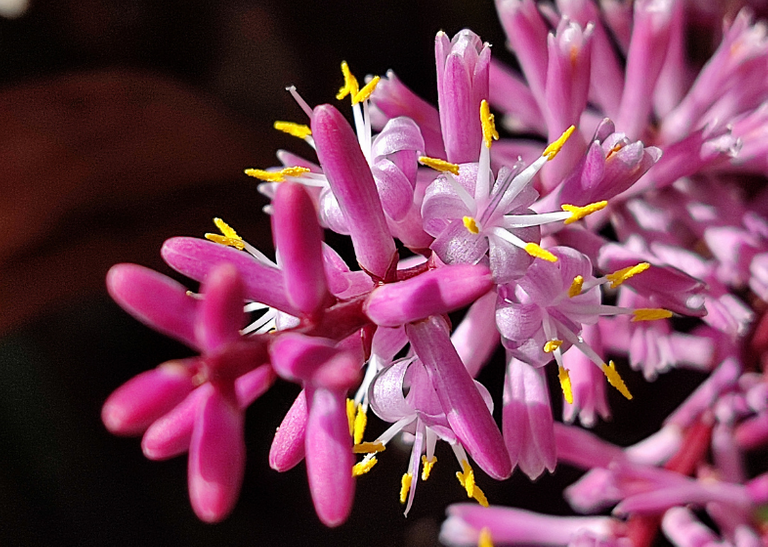

As usual, I often go for walks in the forest to enjoy the clean air, the sounds of nature and to recharge myself with that invisible and magical energy that the forest emanates. I usually take these walks calmly so as not to miss any detail that might be curious. This walk was no exception to finding a botanical treasure on my way.
At first glance, I could see some pretty pink flowers that caught my attention, and as I approached, I saw that they were flowers with beautiful yellow pistils exposed to the outside that moment, I felt like a bee or butterfly, I felt an inevitable attraction 😂😂😂. And as always, I took my cell phone camera and began to photograph everything I could of this fascinating plant.
Como es costumbre voy de paseo frecuentemente al bosque para disfrutar del aire limpio, de los sonidos de la naturaleza y recargarme de esa energía invisible y mágica que emana el bosque. Estos paseos los suelo hacer en calma para no perderme algún detalle que pueda ser curioso. Este paseo no fue la excepción para encontrar un tesoro botánico en mi camino.
A simple vista pude observar unas lindas flores de color rosa que llamaron mucho mi atención y al acercarme vi que eran unas flores con unos lindos pistilos amarillos expuestos hacia la parte exterior, en ese momento me sentí cual abeja o mariposa, sentí una atracción inevitable 😂😂😂. Y como siempre, tomé la cámara de mi celular y comencé a fotografiar todo lo que pude de esta fascinante planta.
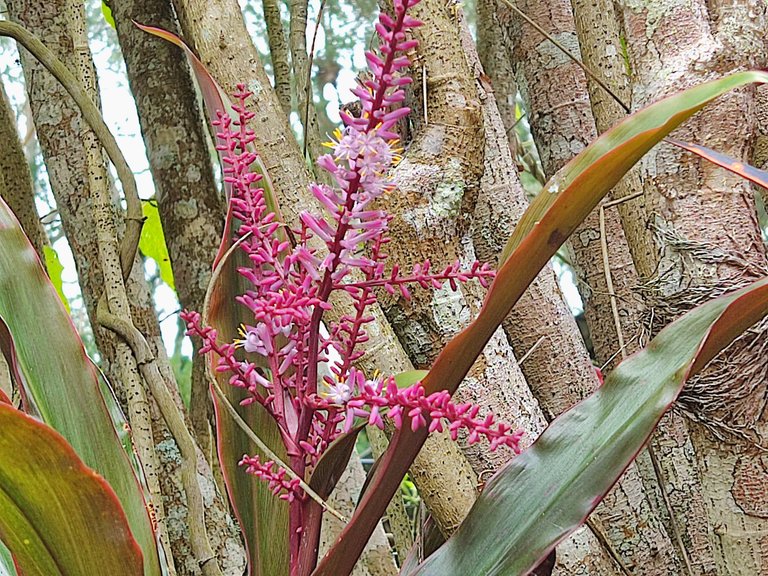

When I calmly reviewed the photos at home, I saw that it was a shrub-like plant native to Polynesia. Its scientific name is Cordyline fruticosa, colloquially known as ti plant, good luck plant, or palm lily. This plant usually grows in temperate climate zones (18-25ºC) and medium relative humidity. Its size can be 1-3 meters high. It is found in meadows at sea level up to mountainous areas up to 3000 meters high.
Although it is a native plant of Polynesia (New Guinea) it is widely spread in territories of New Zealand, Hawaiian Islands, South America, China, Taiwan, Philippines, etc. Now, how this plant came to the mountainous forests of my country? but whatever its origin was, it allowed me to enjoy it and learn about it.
Al revisar con calma las fotos en casa ví que se trataba de una planta tipo arbusto originaria de Polinesia. Su nombre científico es Cordyline fruticosa, conocida coloquialmente como planta ti, planta de la buena suerte o lirio de palma. Esta planta suele crecer en zonas de clima templado (18-25ºC) y húmedad relativa media. Su tamaño puede ser de 1-3 metros de altura. Suele encontrarse en praderas a nivel del mar hasta en zonas montañosas que alcanzan los 3000 metros de altura.
Aunque es una planta nativa de Polinesia (Nueva Guinea) se encuentra ampliamente extendida en territorios de Nueva Zelanda, Islas de Hawai, Sudamérica, China, Taiwám, Filipinas, Ahora bien, me pregunto ¿cómo llegó esta planta a los bosques montañosos de mi país? pero en fín cual fuese su origen me permitió disfrutarla y aprender sobre ella.

If this plant is linked to the Polynesian culture and its displacements to various territories, it is very likely that this species has an age dating back to 1000 years BC. Therefore they have given it many uses whether medicinal, food, to make footwear and clothing, cooking their food by wrapping them in their leaves, for the manufacture of the roofs of their houses, religious rituals, marriage, and funeral ceremonies.
Si esta planta está ligada a la cultura polinesia y sus desplazamientos hacia varios territorios, es mu probable que esta especie tenga una edad que data desde 1000 años a.c., por tanto le han dado muchos usos ya sean medicinales, alimenticios, para elaborar calzado y vestimenta, cocinar sus alimentos envolviéndolos en sus hojas, para la fabricación de los techos de sus casas, así como en rituales religiosos, ceremonias matrimoniales y funerarios.
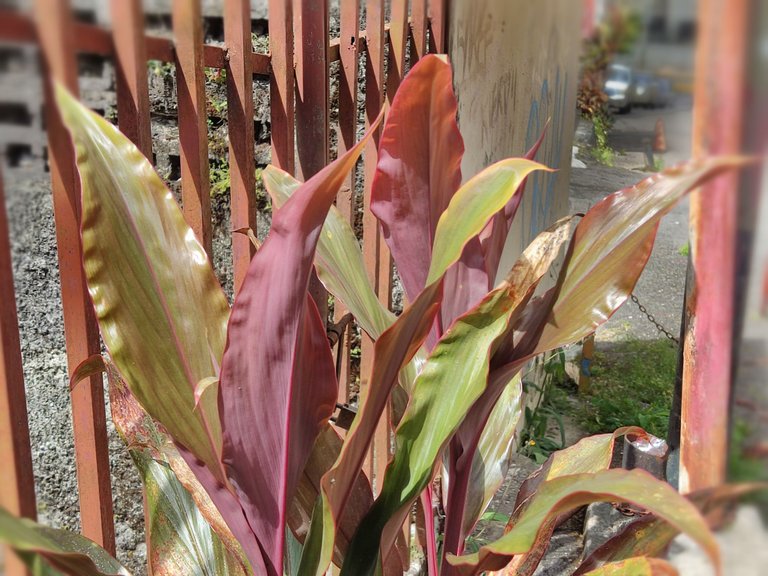
The Cordyline fruticosa is called "good luck plant" but I believe that this denomination is due to a translation error of the languages of the Polynesian or Hawaiian islands since it is believed that this plant scares away evil spirits, so having it at the entrance of your house provides the belief of having protection against any evil.
La Cordyline fruticosa se le llama "planta de buena suerte" pero creo que esta denominación se debe a un error de traducción de los idiomas de las islas polinesias o hawaianas ya que más bien se tiene la creencia que esta planta ahuyenta a los malos espíritus, así que tenerla a la entrada de tu casa proporciona la creencia de tener protección ante cualquier mal.

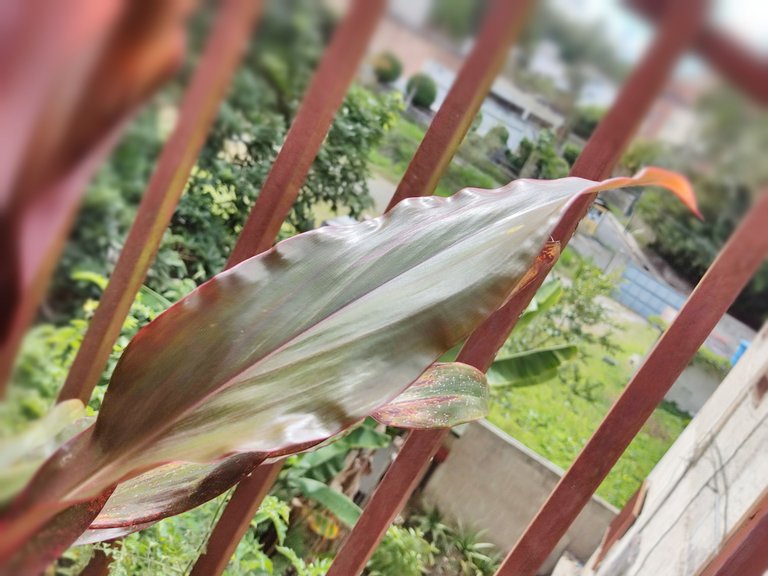
Its leaves can be green, purple with pink tints, or dark purple to almost black. If you observe well, its form is lanceolate and elongated that is why they are the perfect raw material to elaborate the skirts of the typical Hawaiian dance "hula" as well as to make the ceremonial capes of the shamans of those islands.
Its flowers are star-shaped, can be white or beige, and are used to make the "lei", which is a crown or necklace that is given as a welcome or farewell to those who visit Hawaii. Surely you must have seen this on the television series of the 70's "Fantasy Island" with the famous Tatu 😂😂😂.
Sus hojas pueden ser de color verdes, púrpura con tintes rosa o púrpura oscuro llegando a casi negras. Si observas bien su forma es lancelada y alargada por eso son la materia prima perfecta para elaborar las faldas de la danza típica hawauiana "hula" igual para hacer las capas ceremoniales de los chamanes de esas islas.
Sus flores son en forma de estrella, pueden ser de color blanco o beige y suelen usarse para confeccionar el "lei", que es una corona o collar que se otorga de bienvendida o despedida a quienes visitan Hawai, seguro esto lo debes haber visto en la serie televisiva de los años 70 "La Isla de la fantasía" con el famoso Tatú 😂😂😂.

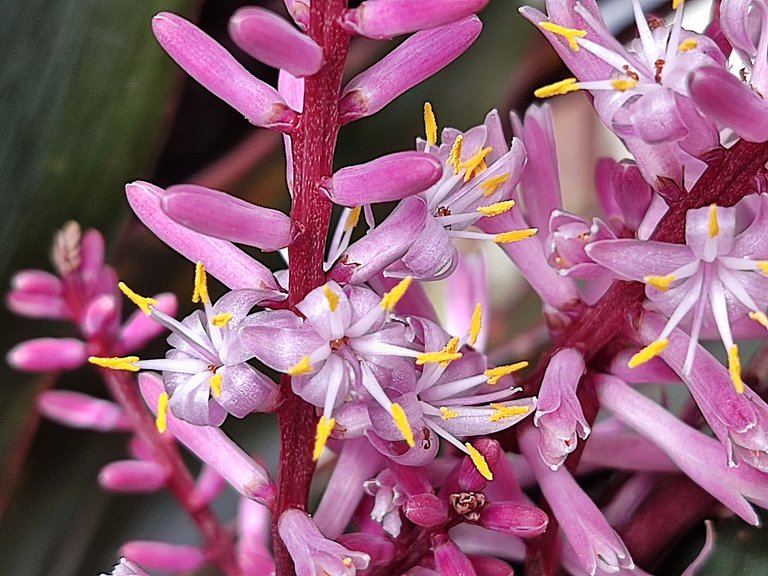

This plant has been used since time immemorial to cure asthma, digestive problems, respiratory infections, pharyngitis, diarrhea. This is why science has been interested in the study of various parts of the plant to prove its medicinal efficacy, finding that the leaves contain a large amount of a bioactive flavonoid substance called farrerol, which has antibacterial properties against Staphylococcus Typhi, coli and aureus, responsible for pharyngeal infections and gastrointestinal bacterial infections. These findings may be a pharmacological alternative to fight bacteria without causing antibiotic resistance in humans.
Esta planta ha sido usada desde tiempos inmemoriales para curar el asma, problemas digestivos, infecciones respiratorias, faringitis, diarreas. Es por esto que la ciencia se ha interesado en el estudio de varias partes de la planta para comprobar su eficacia medicinal encontrando que en las hojas se concentra una gran cantidad de una sustancia bioactiva de tipo flavonoide llamada farrerol la cual tiene propiedades antibacterianas frente a el Estafilococo typhi, coli y aureus, responsables de infecciones de faringe e infecciones bacterianas gastrointestinales. Estos hallazgos pueden ser una alternativa farmacológica para combatir bacterias sin causar resistencia a los antibióticos en los humanos.

A curious fact is that with the roots of this plant you can make an alcoholic drink of 100 degrees of alcohol. Can you imagine the burning in the throat that produces taking a sip of this? Well in Hawaii the only alcoholic drink is made with the root of this plant which is roasted a little and fermented with sugar and pineapple. This drink is called okolehao which means "metal butt" 😂😂😂, I will explain this meaning in another publication. The truth is that "okolehao", also known as "oke", is a distilled alcoholic beverage with a sweet and earthy flavor first made at the end of the 8th century. Initially, its production was similar to a rudimentary beer and over time, it began to be distilled. Today some are brewed at 70 and 80 proof, although there are historians who say that the original "oke" may have contained 100 proof.
I hope you enjoyed my publication. I am always very surprised with this gift that nature put in my way, and I have been craving for a visit to Hawaii to see the "hula" skirts, hang on my neck a fragrant "lei" and drink "oke".
Un dato curioso, es que con las raíces de esta planta se puede fabricar una bebida alcohólica de 100 grados de alcohol ¿se pueden imaginar el candelaso que produce tomar un sorbo de esto?, pues bien en Hawai la única bebida artesanal alchólica está elaborada con la raíz de esta planta la cual se tuesta un poco y se fermenta con azúcar y piña. Esta bebida se llama okolehao que significa "trasero de metal" 😂😂😂, esta acepción se las explicaré en otra publicación. Lo cierto es que "okolehao", también conocido como "oke" es una bebida alcohólica destilada de sabor dulce y terroso elaborada por primera vez a finales del siglo VIII. Inicialmente su elaboración era similar a una cerveza rudimentaria y con el paso del tiempo se empezó a destilar. En la actualidad se fabrican algunos de 70 y 80 grados de alcohol, aunque hay historiadores que dicen que el "oke" original pudo contener 100 grados de alcohol.
Espero que hayas disfrutado de mi publicación. Yo estoy como siempre muy sorprendida con este obsequio que la naturaleza puso en mi camino y se me ha antojado de hechar una visitidita por Hawai para ver las faldas del "hula", colgar en mi cuello un fragante "lei" y beber "oke".

If you want to know more about this plant, here are some links that might interest you:
Si quieres saber algo más sobre esta maravillosa planta te dejo unos enlaces que tal vez te puedan interesar:
All images are property of the author.
Gracias por leerme. ¡Nos vemos en una próxima publicación!
Todas las imágenes son propiedad de la autora


The rewards earned on this comment will go directly to the person sharing the post on Twitter as long as they are registered with @poshtoken. Sign up at https://hiveposh.com.
¡Felicidades! Esta publicación obtuvo upvote y fue compartido por @la-colmena, un proyecto de Curación Manual para la comunidad hispana de Hive que cuenta con el respaldo de @curie.
Si te gusta el trabajo que hacemos, te invitamos a darle tu voto a este comentario y a votar como testigo por Curie.
Si quieres saber más sobre nuestro proyecto, acompáñanos en Discord: La Colmena.
We appreciate your work and your post has been manually curated by @redheadpei on behalf of Amazing Nature Community. It will be added to the weekly botany curation post. Keep up the good work!
Hola @chaodietas. Me encantó tu post. Muy original. Las fotos calidad!! Gracias por compartirlas!!👍🌺😊
Wow how amazing that you were able to find this plant up in your mountains!
I would almost expect to see it along your shoreline as seeds from plants do travel by the oceans currents and can grow where they land- which infact so many Polynesian plants are thought to have originated from the Southern American regions too, but u in the mountains- wow!
Coming from Australia, I used to live in Cairns in Far North Queensland, which is a seriously tropical area, having wet seasons and the Daintree Rainforest and I used to Hula dance with a group of people from all over the Polynesian Islands and the guys also used the leaves on this plant to braid into headbands for each performance too!
I will try to find some photos of us dancing with all of the braided vines, leaves and grass skirts on! 😃
And thanks so much for taking us on such a pretty and informative walk through nature with you!
Quite detailed pictures, lovely work ♥️